32 Pilies Street
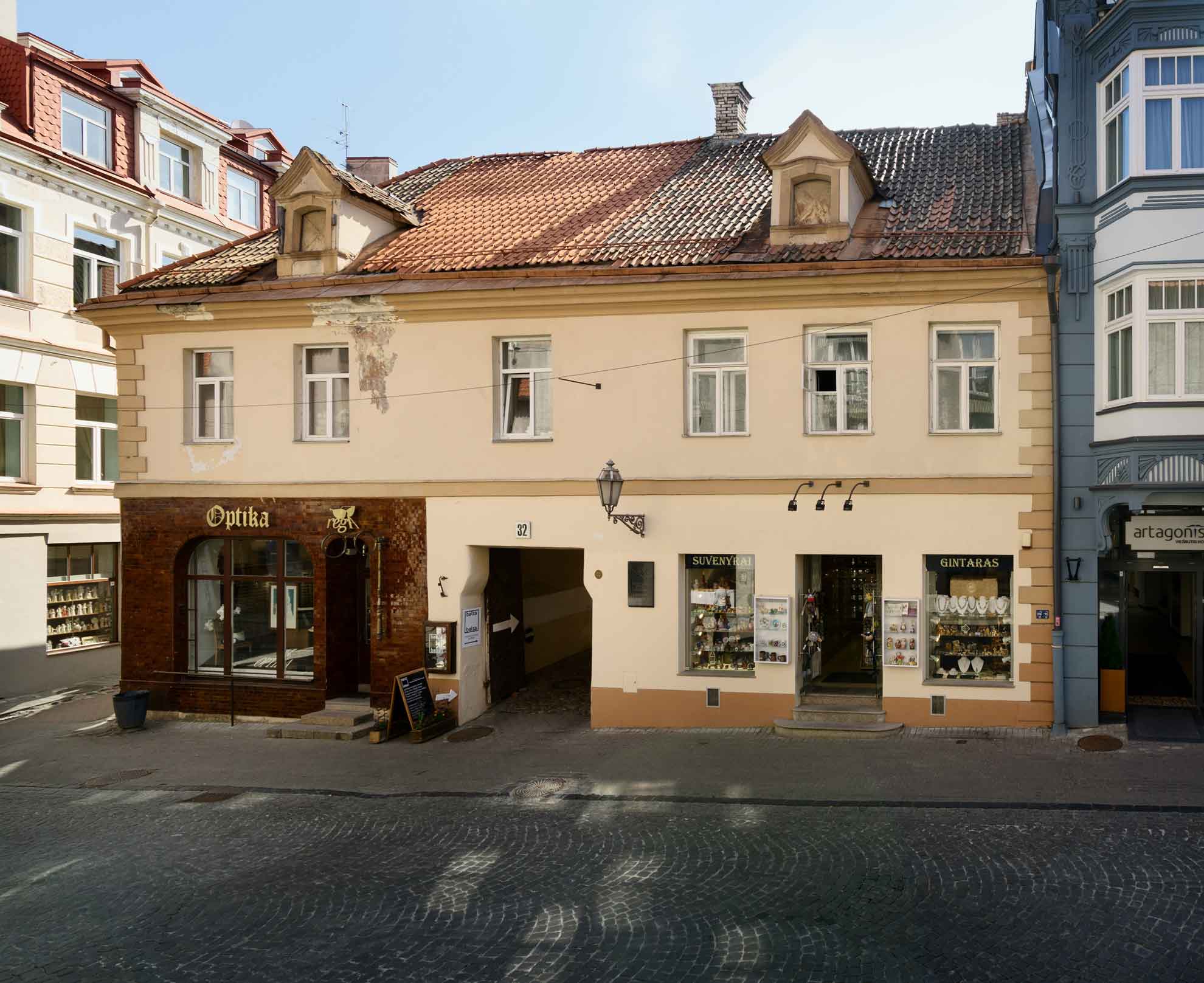
Photographer – Tomas Kapočius
32 Pilies Street. 2018
Lithuanian Art Museum

Photographer – Tomas Kapočius
32 Pilies Street. 2018
Lithuanian Art Museum
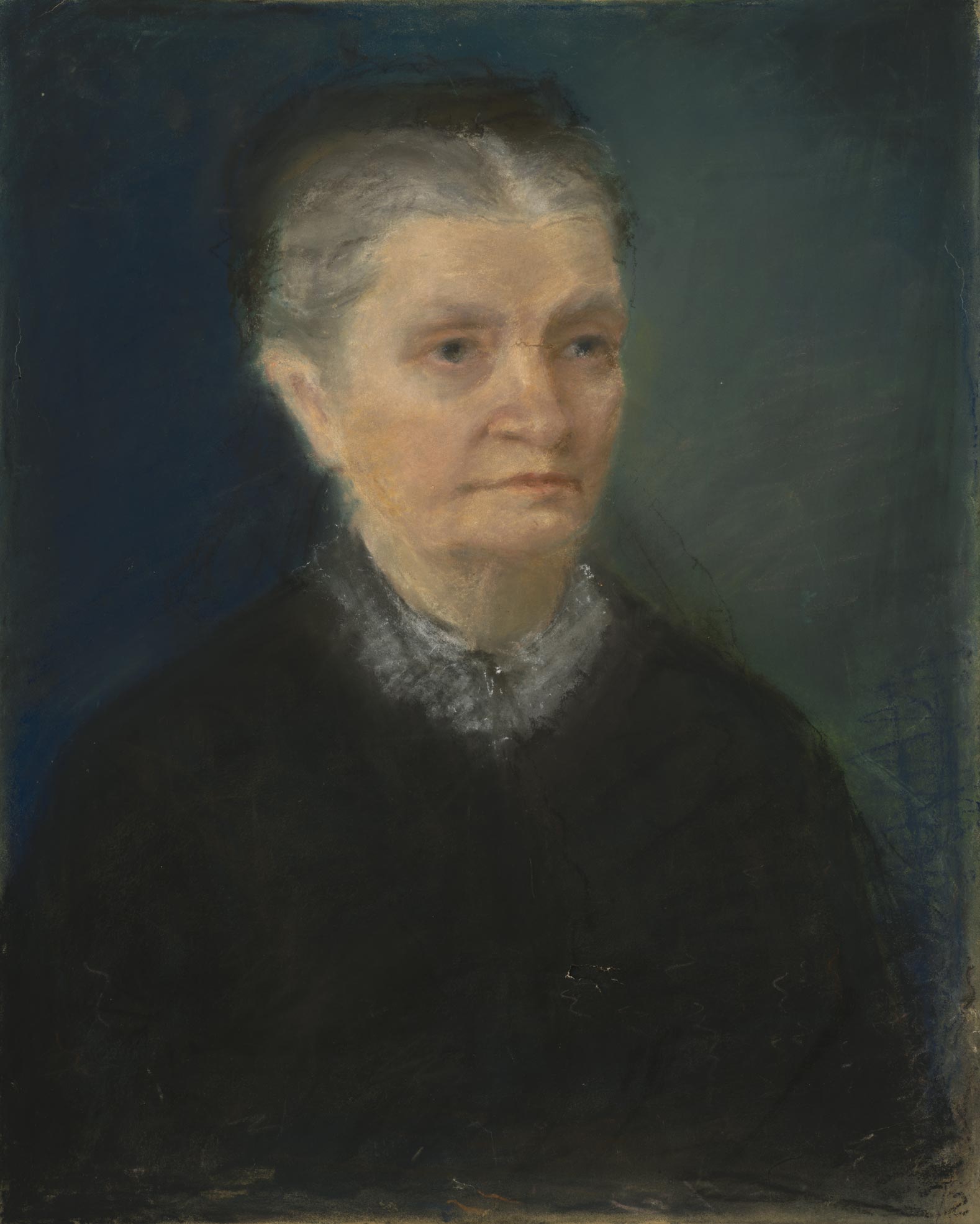
Maria Antonina Wiktorja Römer (1847–1939)
Aniela Römer (1817–1891). 1878
Paper, pastel
Lithuanian Art Museum
The land on which a building was built belonged was part of the Orthodox suburb, called Civitas Rutenica. During the great fire of 1557 two Orthodox churches built here in the 14th century burned down: the Church of the Apostle Evangelist St Ioannes and the Church of Michael the Archangel. Old acts testify that in the 17th century, the building’s owners would find human bones under the foundations – the site used to be an Orthodox cemetery. It is believed that the building’s existing Baroque style dates to 1780 when its owner became the Vilnius burgomaster Antonis Lachowicz. In the beginning of the 19th century, the cafe Wiktoria was located here, so loved by Adam Mickiewicz, Tomasz Zano and other members of the Filarets Society. From 1887 the building belonged to the Römer artists’ family, and from 1944 – to the Lithuanian Art Foundation. It premises served as workshops and in some cases apartments for artists including Vytautas Kalinauskas, Arvydas Každailis, Stasys Krasauskas, Leonas Lagauskas, Bronius Uogintas, Mikalojus Vilutis, and others. The building has been known as Wiktoria House, Römer House and Artists’ House.
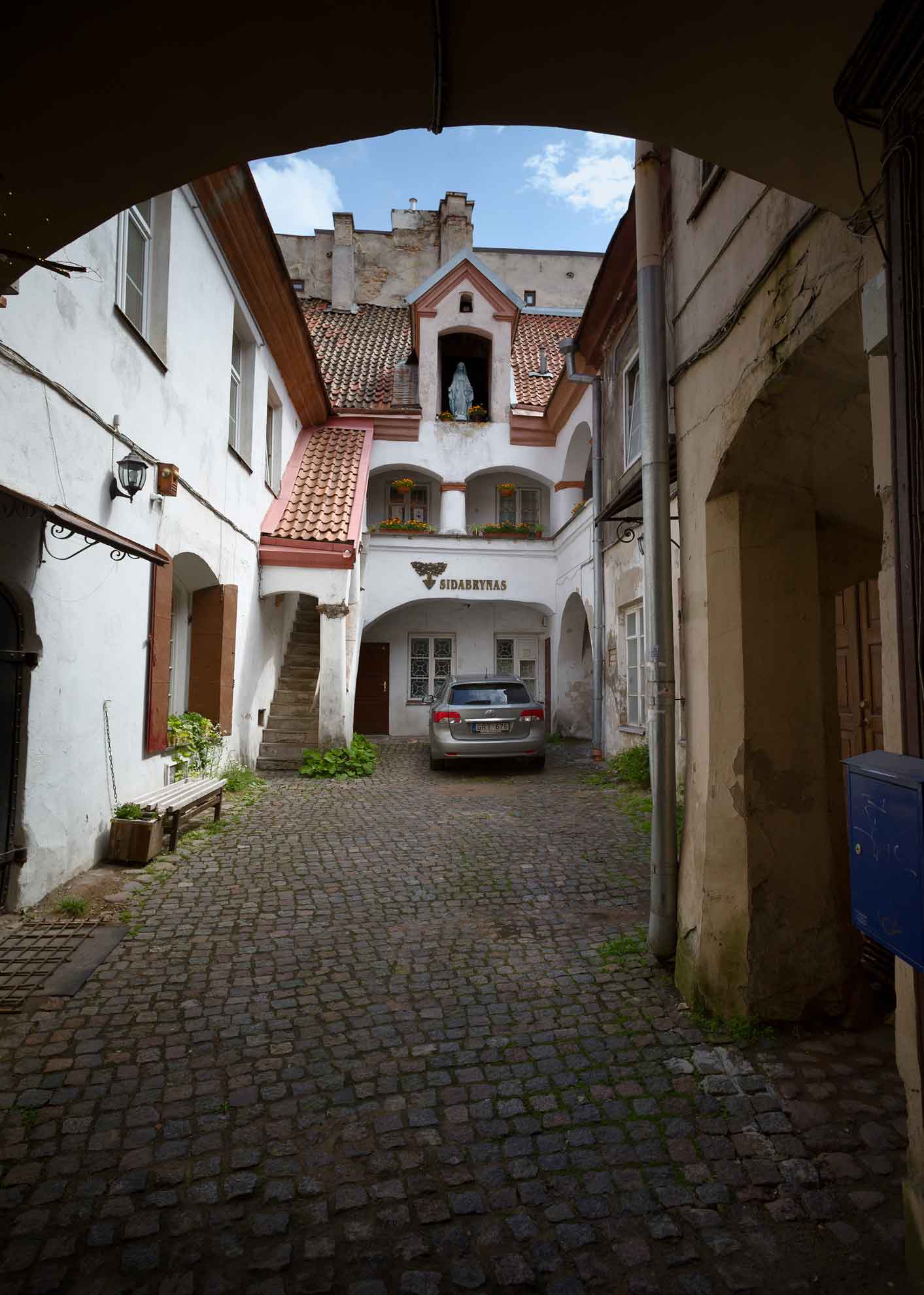
Photographer – Tomas Kapočius
32 Pilies Street courtyard. 2018
Lithuanian Art Museum
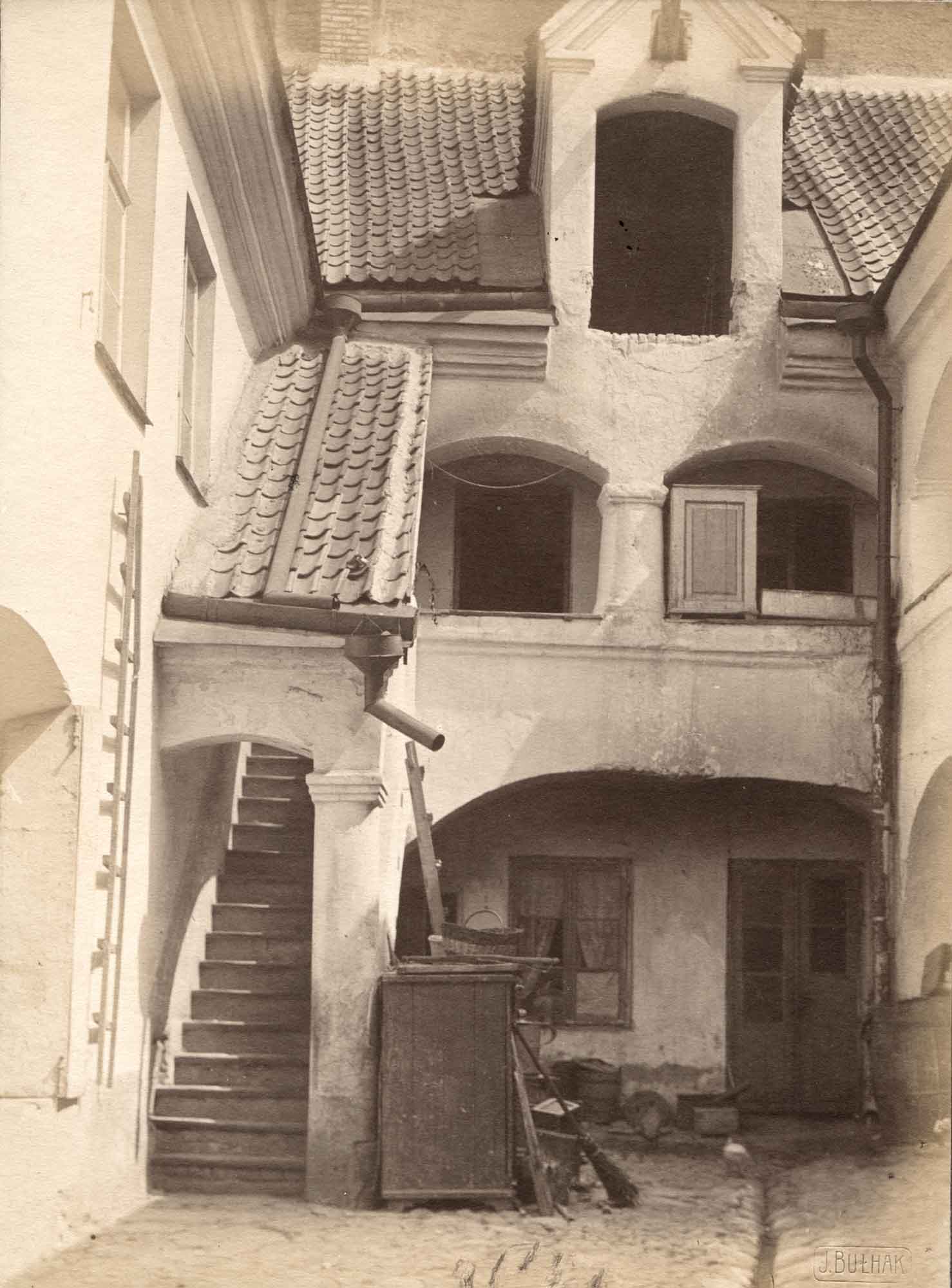
Jan Bułhak (1876–1950)
Wiktoria courtyard in Pilies Street. 1912
Lithuanian Art Museum
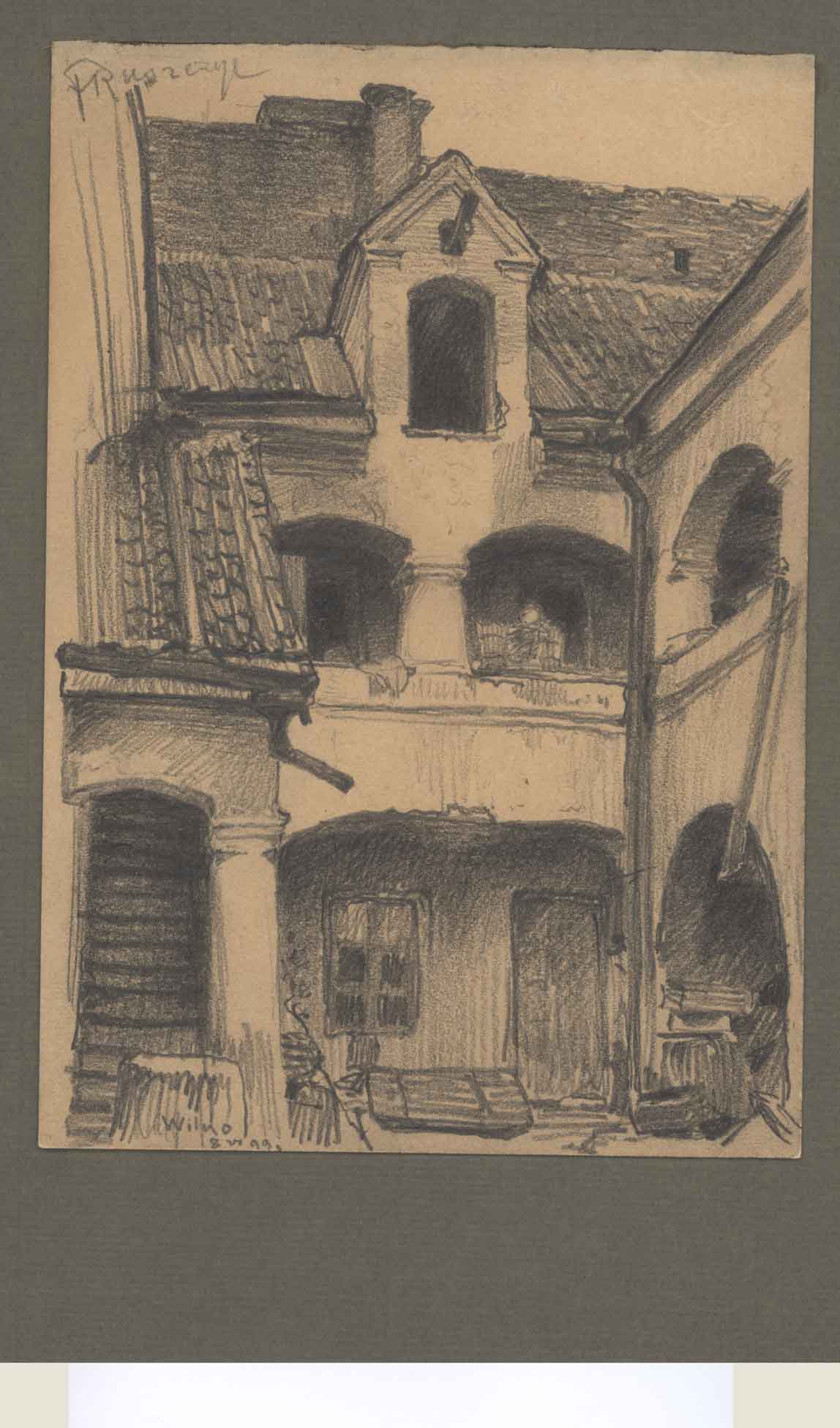
Ferdynand Ruszczyc (1870–1936)
8 Didžioji Street [present-day 32 Pilies Street]. 1899
Paper, pencil
Lithuanian Art Museum
Individuals
VYTAUTAS KALINAUSKAS (1928–2001)
He was a graphic artist, painter and stage designer, and a winner of the Government of the Republic of Lithuania Art Prize (1997). He completed graphic art studies in 1958 at the Lithuanian Art Institute (present-day Vilnius Academy of Art). From 1957 he participated in exhibitions in Lithuania and abroad. He illustrated books, created prints, objects, installations, performance art, video art, stage design sets for theatre performances, and worked in this sphere in film and television. His work is characterised by a variety in execution techniques and stylistics. The arty character with an imposing stance was inseparable from bohemian life in Vilnius, and his studio at 32 Pilies Street was a real centre of attraction for Old Town artists.
STASYS KRASAUSKAS (1929–1977)
A graphic artist, winner of the LSSR State Prize (1965) and the USSR State Prize (1976). He graduated from the Lithuanian Art Institute in 1958 (present-day Vilnius Academy of Art), and taught there from 1961. He participated in exhibitions from 1959 in Lithuania and abroad. Krasauskas created linocuts, woodcuts, lithographs and zincographs, he also illustrated books. The main motif in his works was a stylised human figure, expressing the poetic themes of love, youth, and commonality between man and nature. He also appeared in films and the theatre. He was an active sportsman as well: he beat the Lithuanian swimming records 35 times, and won gold and bronze medals at the USSR water polo and swimming competitions. He had a studio at 32 Pilies Street in 1971–1977.

